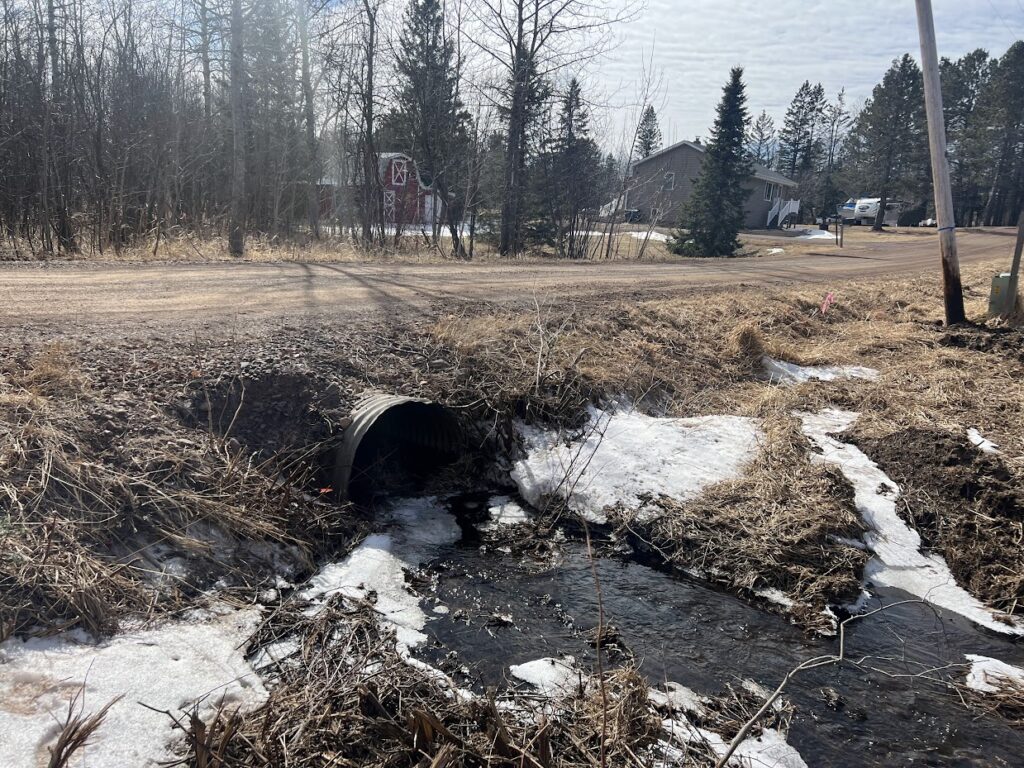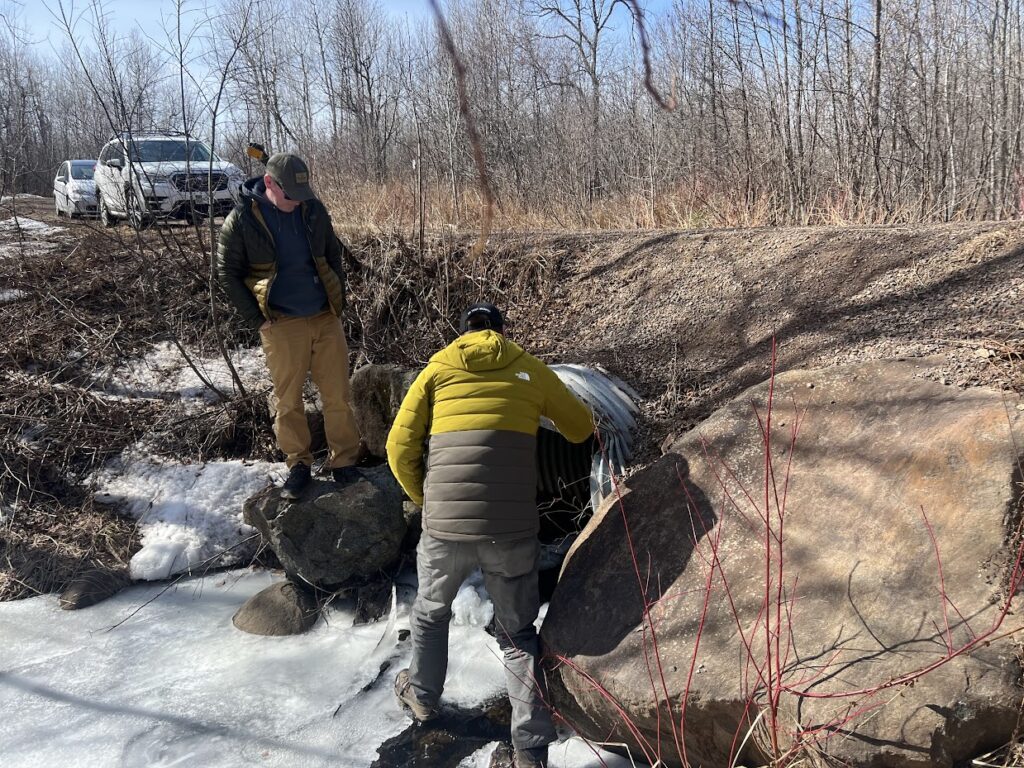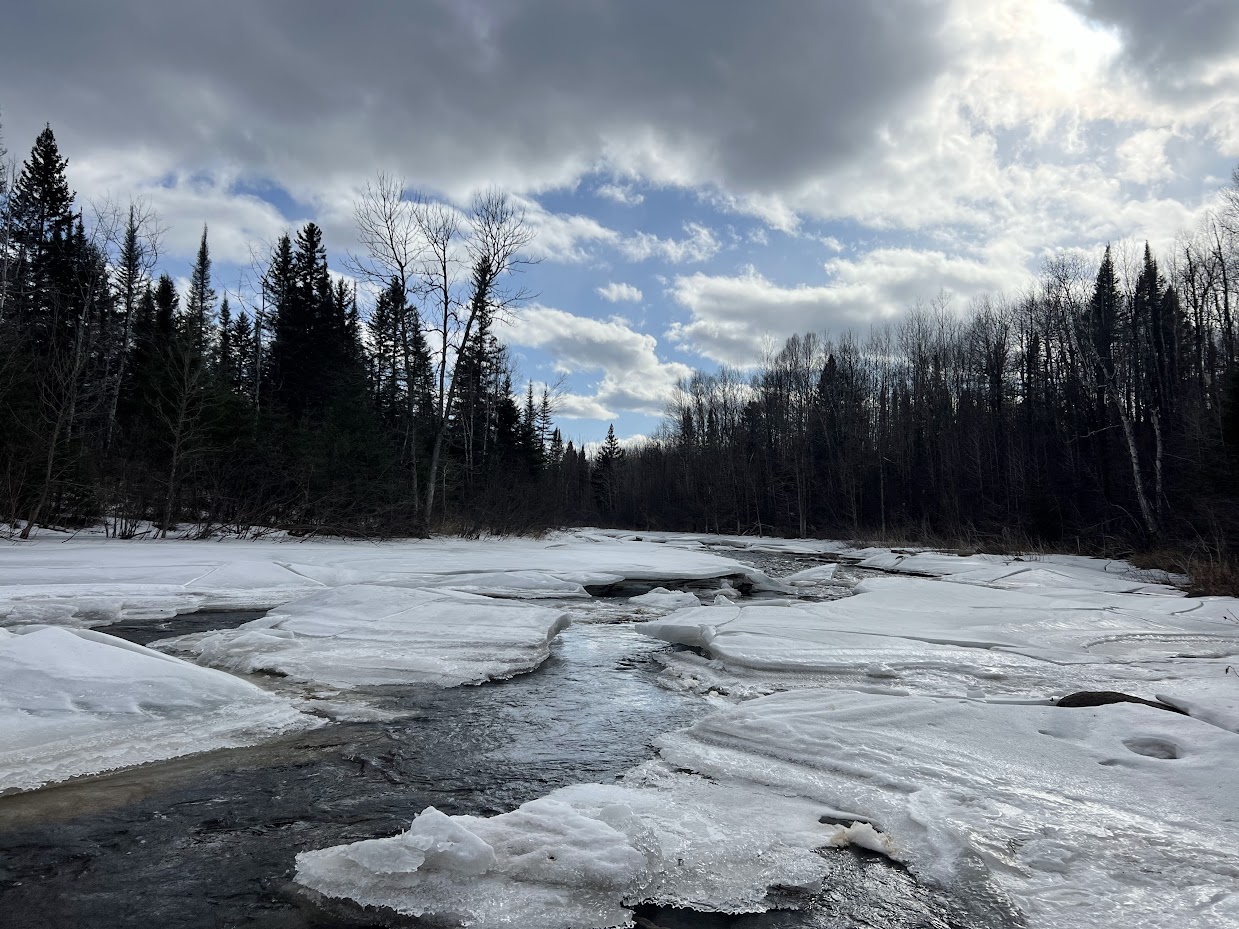Navigating Climate Challenges for Brook Trout on Lake Superior’s North Shore
By Dr. Jennifer Biederman
In northeastern Minnesota, where clear streams carve through thick forests and rocky ridges, the brook trout—a symbol of pristine waters—faces an uncertain future. Climate change, manifesting through rising temperatures and altered precipitation patterns, is reshaping the habitat these fish have thrived in for millennia. Flows of these streams are fueled from the headwaters of rivers and lakes, including snow melt. As stream temperatures inch upward and precipitation patterns shift, the cold, oxygen-rich waters crucial for the brook trout’s survival become scarce in certain years, pushing them to seek refuge in increasingly limited cold water pools.
Where are these cold water refuges for brook trout? It’s not totally certain. A new project by researchers from the Minnesota DNR and University of Wisconsin – Stevens Point is seeking to find out. This research, supported by MNTU and funded by the U.S. Fish and Wildlife Service from the Great Lakes Fish and Wildlife Restoration Act, will tag and track 2,500 fish, including brook trout and steelhead, in North Shore streams across several years to better understand where fish go to find optimal cold water conditions during periods of low flow.
Ensuring that brook trout have access to high-quality, coldwater habitat in northeastern Minnesota streams is a priority of MNTU’s habitat restoration program.
Our efforts to do this involve two types of projects:
- Restoring habitat connectivity with culvert replacements
For the past several years MNTU has worked with MNDNR Fisheries, local Soil & Water Conservation Districts, local highway departments, and other partners to strategically replace the worst culverts that block brook trout movement to coldwater refuges and spawning habitat. Once problematic culverts have been identified, MNTU uses stream temperature and fish population data from the MNDNR to select for replacement those culverts with the best potential to expand connectivity of suitable habitat for wild brook trout populations.
In 2024, MNTU will remove two barrier culverts on the Baptism River watershed and one barrier on Keene Creek in Duluth. In addition, we are coordinating with the MNDNR and MPCA to assist with fish surveys and temperature monitoring to better understand patterns in how brook trout access tributaries and to identify the most important barriers for future projects.

- Restoring riparian forests
The productivity and survival of coldwater fisheries in northeast Minnesota streams are significantly influenced by both past and future forest management within their watersheds. Healthy forests act as natural water reservoirs, absorbing precipitation and releasing it gradually, which benefits stream ecosystems by moderating flow rates and maintaining cooler water temperatures vital for trout. Effective management, including tree harvesting and planting, is essential for fostering forests that support water storage and biodiversity.
Challenges such as climate change and pest infestations necessitate active forest management to preserve these critical habitats and ensure the sustainability of these fisheries. We are coordinating an effort in a key North Shore watershed that utilizes professional foresters to inventory the condition of forest stands on DNR Fisheries lands and develop site specific management and planting plans Ultimately, this effort will provide DNR with sound forest management plans to serve as roadmaps to improve conditions for trout and other aquatic life through targeted harvest and plantings on these riparian lands.

Learn more: Check out this StoryMap to learn more about climate change research happening on the north shore.

